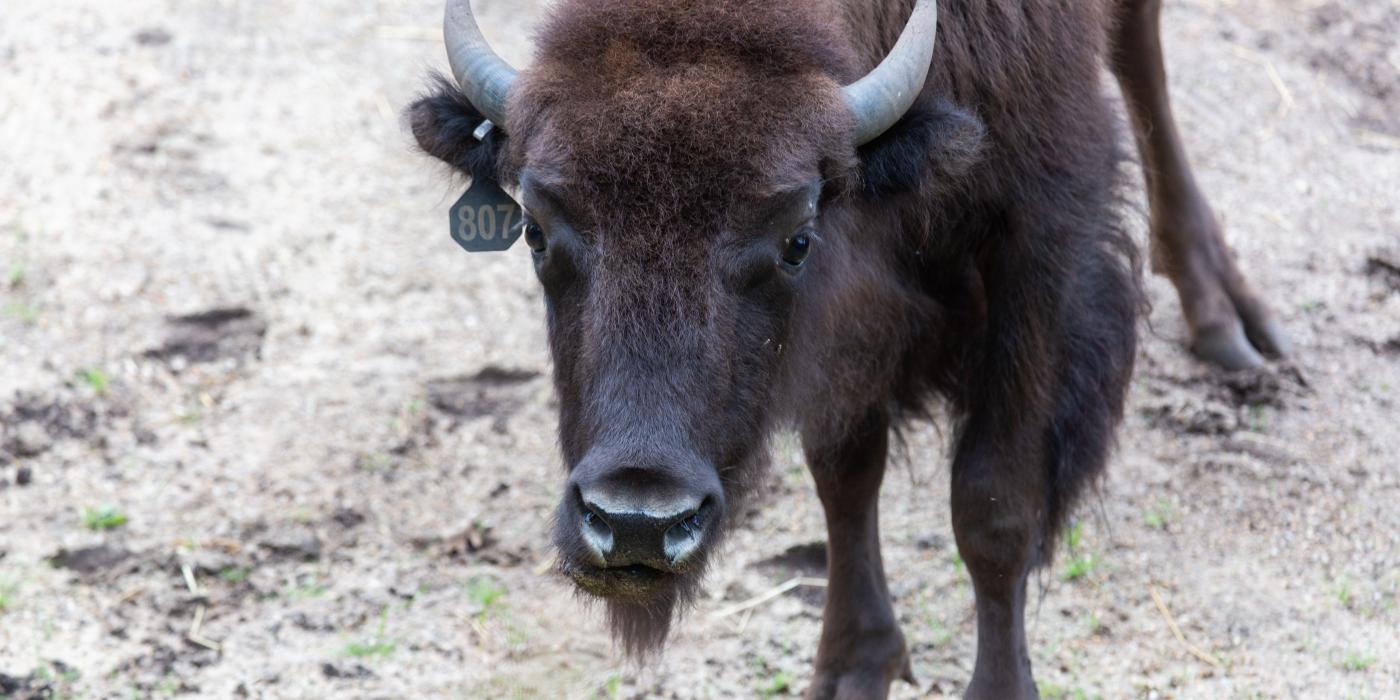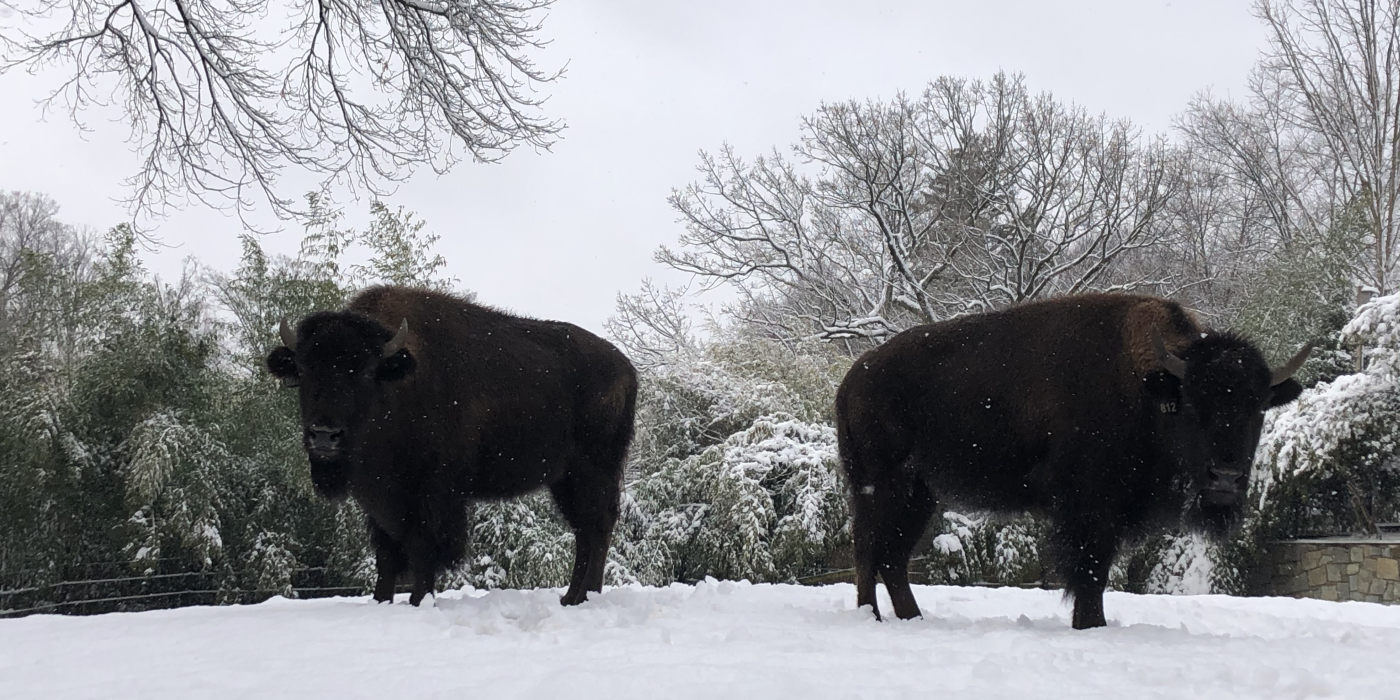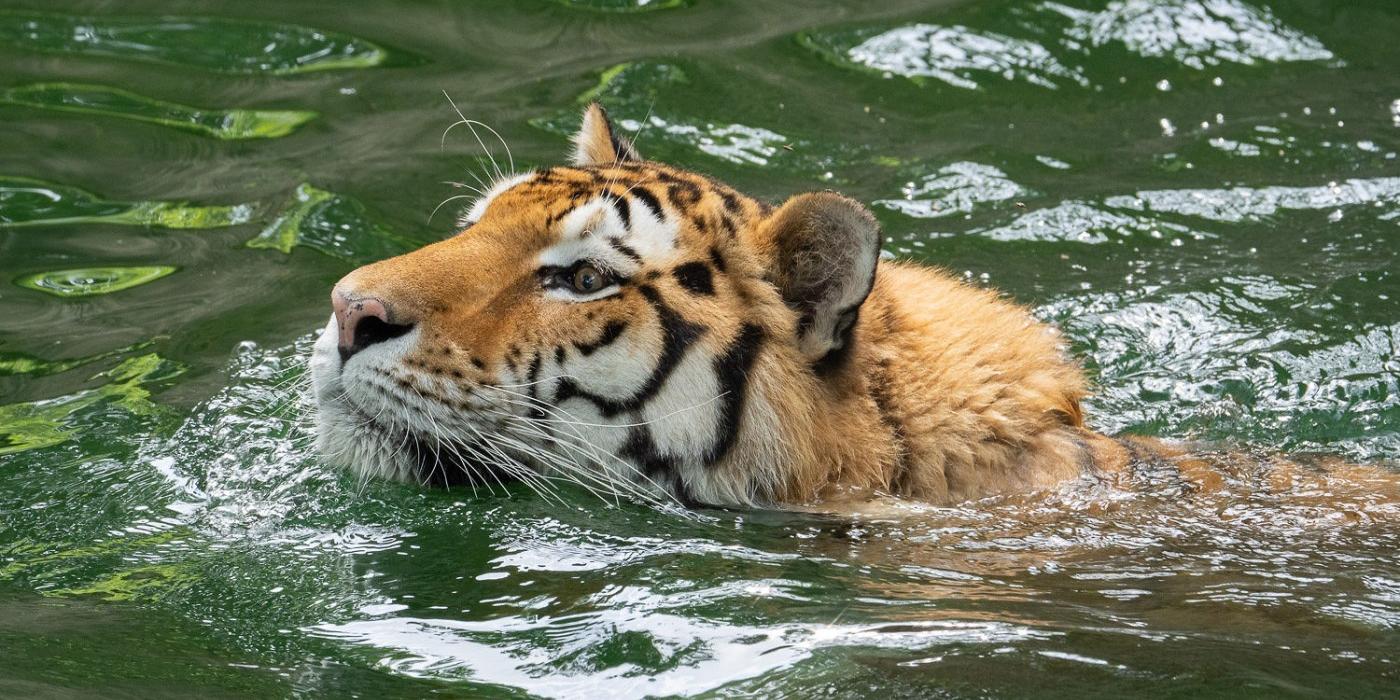New at the Zoo: American Bison
They’re bossy, playful and always in the mood for food—meet Lucy and Gally, the Smithsonian’s National Zoo’s new American Bison named by students from Howard University and Gallaudet University! Since their arrival in March, keeper Michelle Styles has helped them acclimate to their new surroundings. Get to know their personalities and quirks in this Q+A.
What are Lucy and Gally’s personalities like?
Lucy is more dominant than Gally and has a feisty personality. Between the two, she is definitely the boss. When the pair first arrived in March, she was quite unsure about interacting with keepers. Over the past eight months, however, she has become confident in her new environment and around us. She is also very food-motivated and is always on the lookout for her diet items and treats! When I am cleaning behind-the-scenes, I often see her peering down at me from the exhibit, waiting to see if I will bring her a treat.
Like Lucy, Gally is also a fan of food. She is much more submissive than Lucy, though, and lets her go first when it comes to shifting on- and off-exhibit or picking a pile of hay to eat. Although Gally was quite shy at first, she adjusted quickly and was the first to start building a relationship with our keeper team. She has also been brave in many respects. She was the first one to explore their new enclosure when they arrived, and she has been surprisingly willing to try new things, like enrichment puzzle feeders. It’s very endearing to watch her excitedly run around the exhibit and bounce on her front feet to get Lucy to play and run with her!
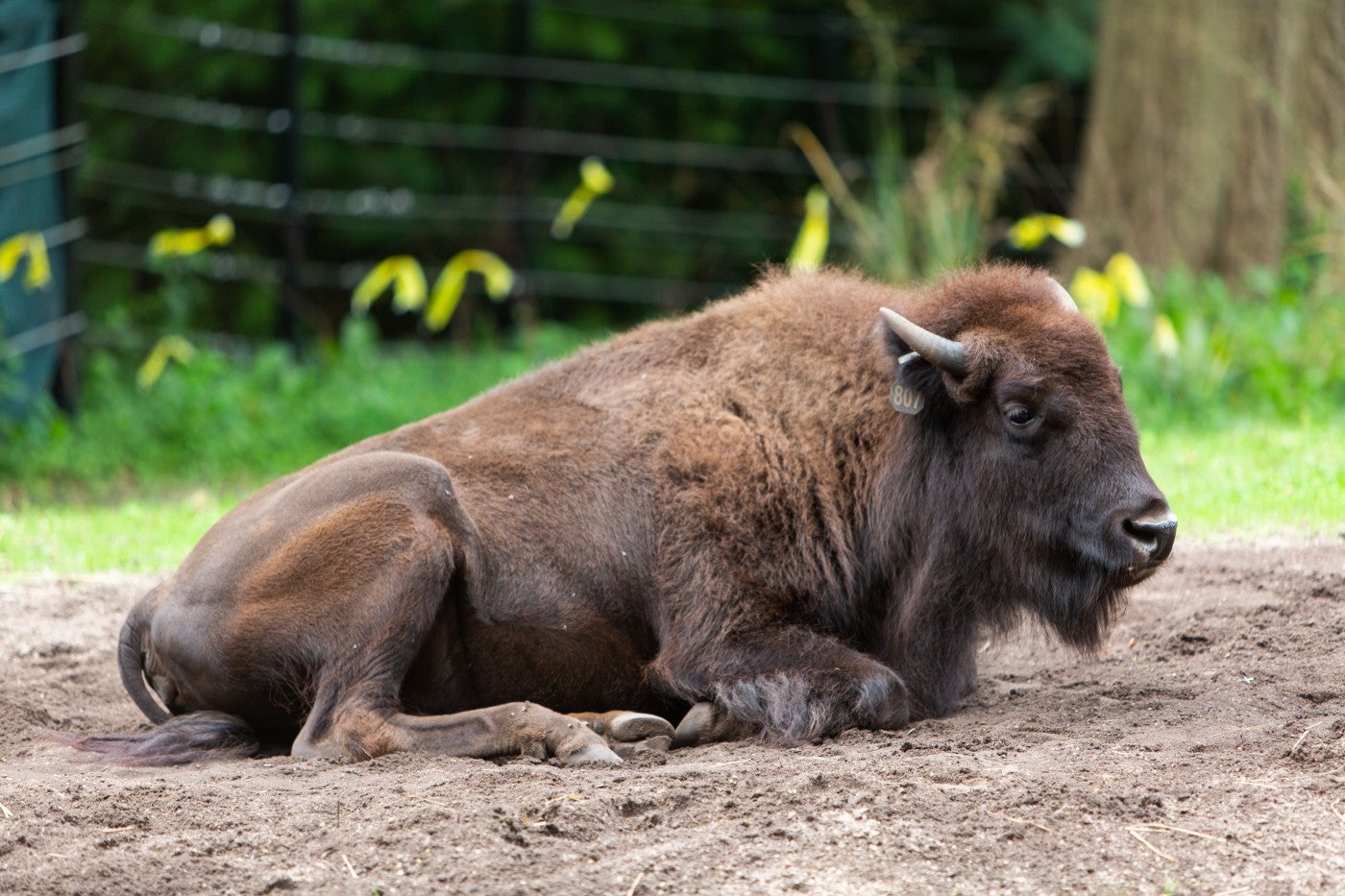
How do you tell them apart?
While their personality differences help us determine who’s who, they also have several unique physical characteristics that help us tell them apart. Lucy is slightly taller than Gally at the moment, and her horns point more toward her back. Gally’s horns point outward. Both bison still have their ear tags from their time at American Prairie Reserve: Lucy’s tag reads 807, and Gally’s is 812. Size-wise, they are quite close. Lucy weights about 561 pounds, and Gally tips the scales at 576 pounds. Once they are fully mature, though, they could weigh twice as much as they do now.
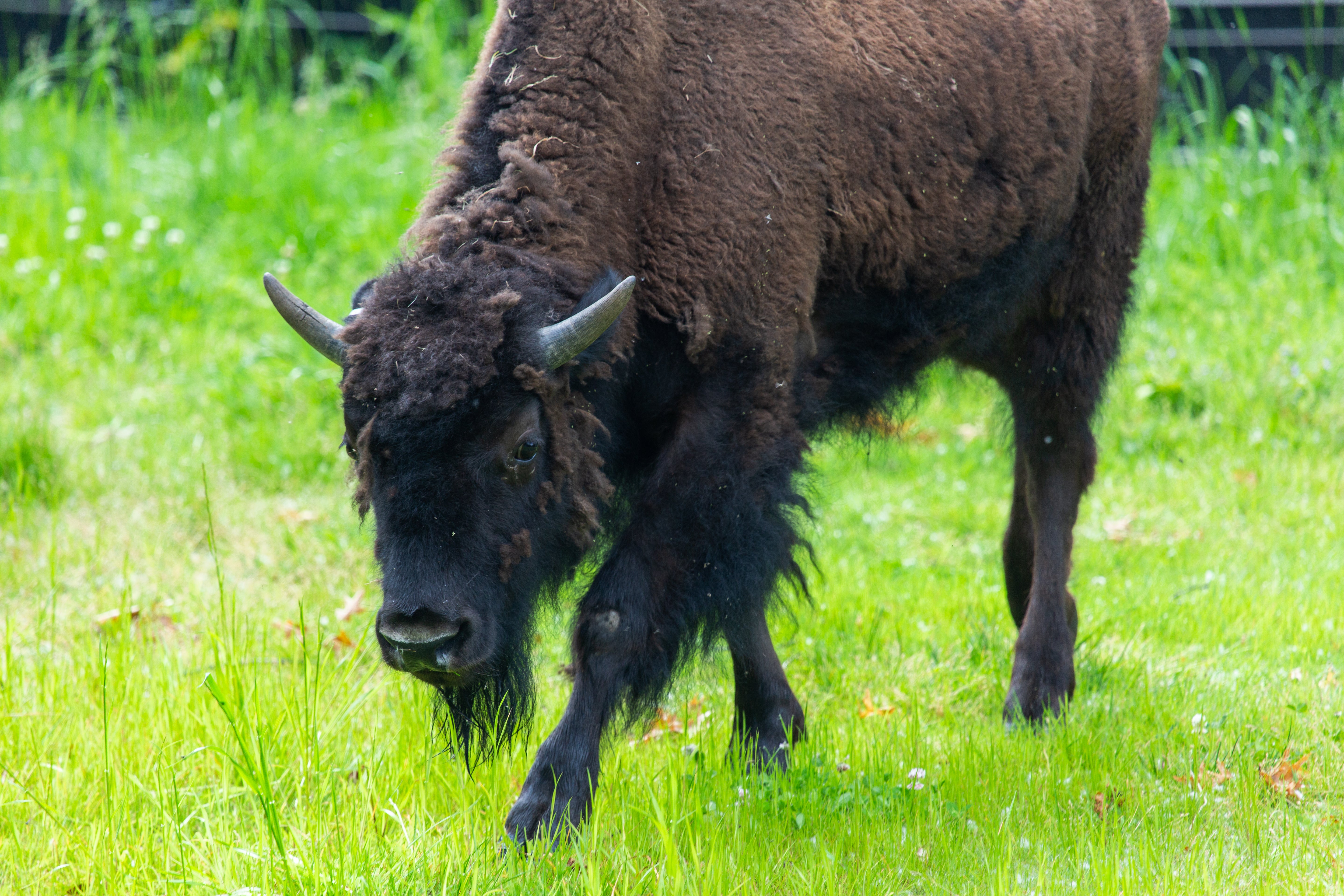
What do you enjoy most about caring for bison?
Bison are smart animals with good memories and a stubborn side that make caring for them challenging, but fun! When Lucy and Gally arrived, they had not had many close encounters with people, so they were very nervous and unsure about interacting with our keeper team.
First and foremost, we learned what their favorite treats were and rewarded them when they shifted to different areas of the barn on cue or when they approaching us. This is part of our positive reinforcement training program. The bison choose whether they want to participate and, if they do, we reward them with food.
Luckily, both Lucy and Gally are very food-motivated. Eventually, they took food from our hand and voluntarily climbed upon a large scale so we could weigh them. It took a lot of time and patience to build their trust.
Some of our next goals include target training, where we will teach them to touch their nose to a target (a small buoy on a stick) to get a treat. This can be a useful behavior to position them around their enclosure or get a closer look at them. We are also familiarizing them with a tamer, which is a device that we use during veterinary exams.

What kinds of enrichment do the bison receive?
Lucy and Gally receive a variety of toys, puzzle feeders, foods, spices and browse (leafy tree and shrub trimmings) that enable them to choose how they want to spend their time throughout the day. They each eat about half a bale of hay a day, as well as 3.3 pounds of herbivore pellets.
Lucy and Gally are really food-motivated and enjoy any enrichment involving food. Their favorite treats include hay cubes, produce such as apples, bananas, sweet potatoes and carrots, and several types of nutritionally-fortified biscuits.
We will put these items in puzzle feeders, under toys or hide them in hay piles so that they have to forage a bit to find the treats. I also like to sprinkle different spices on their toys or around their hay to add new and interesting scents to their environment. Lucy ignores puzzle feeders for the most part, but Gally will try to get a few treats out before moving on to foods that are more easily accessible.
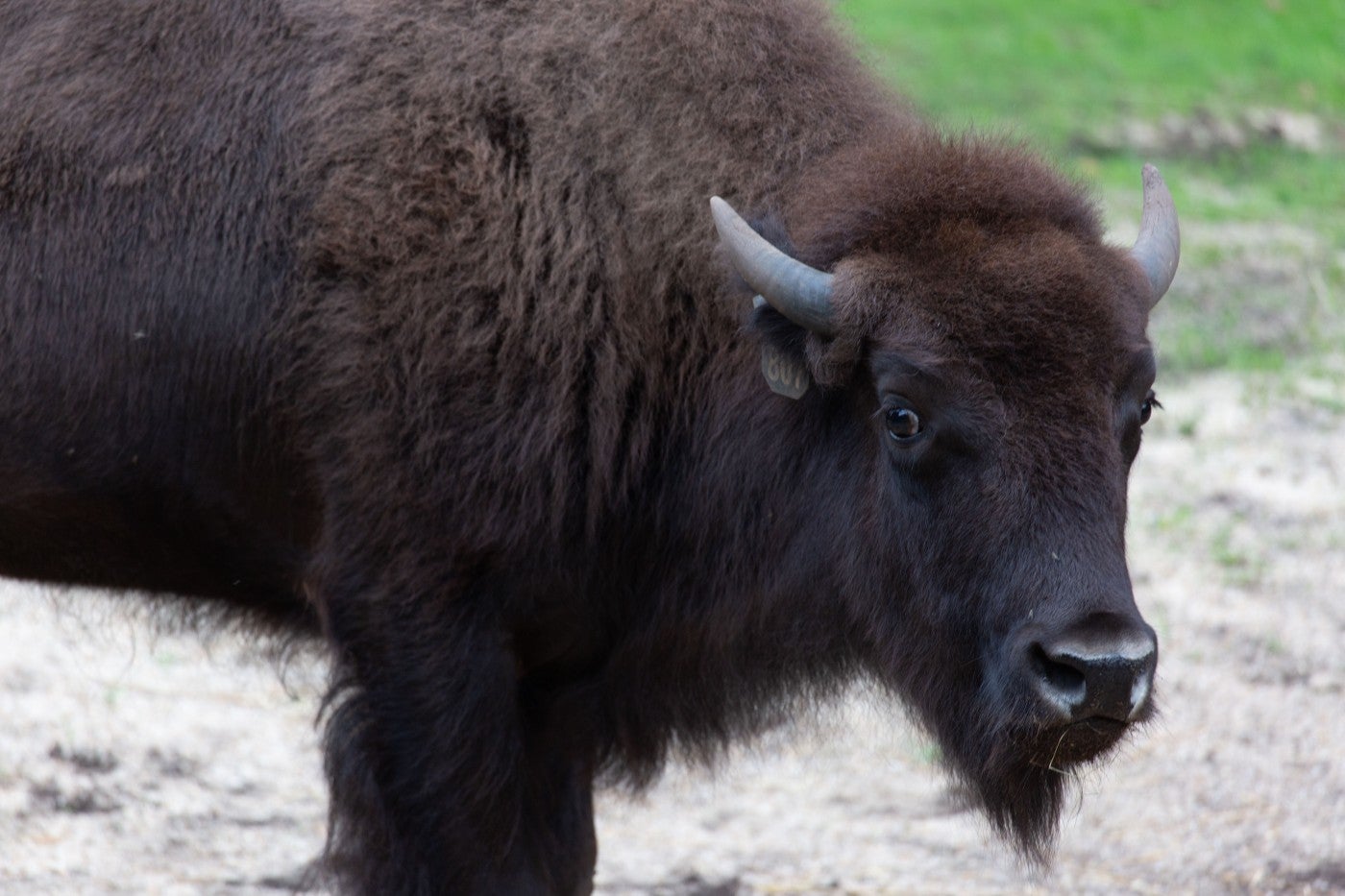
What do you hope visitors take away from meeting Lucy and Gally?
I hope our visitors can appreciate how amazing and fascinating bison are after meeting Lucy and Gally, and why it’s important that we protect and conserve this species that we almost lost forever. Some simple actions people can do at home include planting native grasses and plants that attract pollinators, such as bees and monarch butterflies, and not using chemical fertilizers. Also, spread the word! Just talking to friends and family about these amazing animals can help people better understand their plight and motivate others to take steps to ensure their survival.
This story was featured in the November 2020 issue of National Zoo News. Learn more about the Smithsonian Conservation Biology Institute’s efforts to study bison on the American Prairie Reserve.
UPDATE: Please note that the Zoo is temporarily closed as a public health precaution to help prevent the spread of COVID-19.
Related Species:
